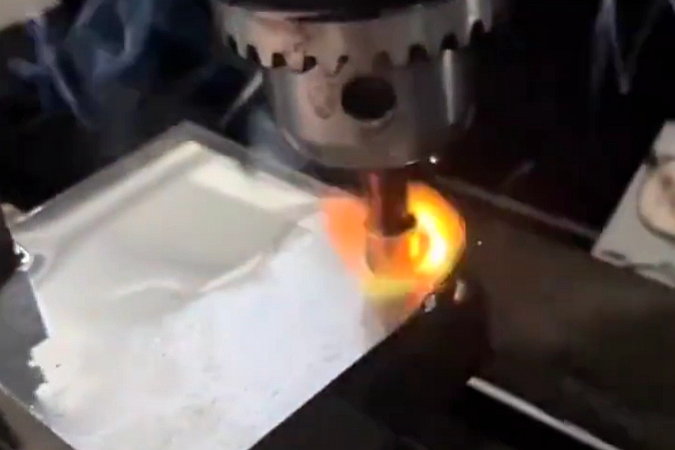Super Alloy Inconel 718 Mold Parts Die-Sinking EDM
Introduction to Die-Sinking EDM for Inconel 718 Mold Components
Die-sinking EDM (Electrical Discharge Machining) is a key post-process for Inconel 718 mold components, enabling the creation of complex cavities and fine detail in hardened alloys. This non-contact technique is ideal for manufacturing high-temperature, high-pressure mold tooling with superior dimensional stability.
At Neway Aerotech, we offer die-sinking EDM services for Inconel 718 investment castings, serving mold makers in aerospace, defense, and high-performance polymer industries.
EDM Machining Technology Overview
Classification of EDM Machining
EDM Process | Surface Roughness (Ra, μm) | Dimensional Tolerance (mm) | Aspect Ratio | Heat Affected Zone (HAZ, μm) | Min. Feature Size (mm) |
|---|---|---|---|---|---|
Wire EDM | 0.3–1.2 | ±0.002–±0.01 | Up to 20:1 | 2–5 μm | ~0.1 |
Sinker EDM | 0.4–2.5 | ±0.005–±0.02 | Up to 10:1 | 5–10 μm | ~0.2 |
Hole Drilling EDM | 0.5–3.0 | ±0.02–±0.05 | Up to 30:1 | 10–15 μm | ~0.1 |
Micro-EDM | 0.1–0.4 | ±0.001–±0.005 | Up to 15:1 | <2 μm | <0.05 |
Sinker EDM excels at blind features, deep cavities, and sharp corners in hardened Inconel molds.
EDM Machining Selection Strategy
Sinker EDM: Primary method for forming mold cavities, draft angles, ejector reliefs, and undercuts.
Wire EDM: Used for external shapes and insert profiling.
Micro-EDM: Ideal for small fillets, embossing, and air trap features in mold cores.
Hole Drilling EDM: Applies to cooling channels or precision venting in thick-walled molds.
Material Considerations
Inconel 718 Mold Insert Performance Profile
Property | Value |
|---|---|
Tensile Strength @ 650°C | ~980 MPa |
Hardness (after aging) | HRC 36–42 |
Mold Operating Temperature Limit | 700–750°C |
Oxidation Resistance | Excellent under thermal cycling |
EDM Machinability | Good with graphite/copper electrodes |
Why Inconel 718 for Die-Sinking EDM Mold Applications?
Superior hot strength supports dimensional stability under injection or compression mold pressures
Withstands frequent thermal cycling in molds used for thermoset, thermoplastic, and rubber processing
Commonly vacuum investment cast into net-shape mold blocks, refined with sink EDM
Case Study: Cavity Formation in In718 Mold Insert Using Die-Sinking EDM
Project Background
A client in the chemical processing tooling sector required a high-pressure compression mold cavity machined from Inconel 718 for long-cycle sealing material fabrication. The part required ±0.005 mm precision and 25 mm cavity depth with no distortion.
Manufacturing Work Flow
Material: In718 casting block, HIP-treated, rough milled to ±0.1 mm
Pre-machining: CNC pocketing left 0.3 mm excess on cavity walls
Die-Sinking EDM: Graphite electrode used, 3D cavity formed with spark gap 0.08 mm, depth 25 mm, taper <0.01 mm
Micro-EDM: Added 0.15 mm fillets and 0.3 mm vent trench at cavity base
Post Process
Stress-relief heat treatment at 925°C for 2 hours
Hot Isostatic Pressing at 1200°C/100 MPa for porosity elimination
Shot peening to enhance fatigue resistance at mold edges
Surface Finishing
Cavity polished to Ra ≤ 0.5 μm using diamond slurry
Passivated to prevent oxidation during storage and use
All sharp corners verified and refined to R0.03 mm radius
Inspection
CMM inspection on 42 cavity points, deviation <±2 μm
X-ray check revealed no porosity or shrinkage
SEM analysis showed consistent EDM discharge quality
Ultrasonic immersion testing confirmed internal soundness
Results and Verification
Sinker EDM maintained ±0.005 mm dimensional accuracy over 25 mm depth and 3D cavity contour in In718 insert.
No microcracks or recast zones observed under SEM inspection, ensuring structural integrity at working temperatures above 700°C.
Surface roughness met Ra ≤ 0.5 μm requirement for clean demolding of composite material with zero adhesion failures.
CMM scanning matched cavity geometry to CAD with <±2 μm profile variance, ensuring exact part fit and sealing.
Final mold insert passed thermal cycling tests at 725°C, completing 20,000 molding cycles with no measurable dimensional drift.
FAQs
What electrode material is best for die-sinking EDM on Inconel 718?
How do you prevent cracking or residual stress during EDM cavity formation?
Can In718 mold parts be post-coated with PVD or TBC layers?
What is the surface finish range achievable via die-sinking EDM?
How is deep cavity taper controlled in thick In718 inserts?

